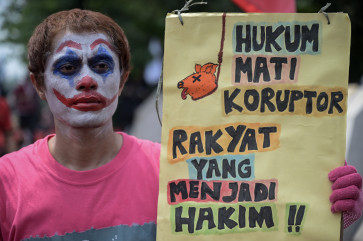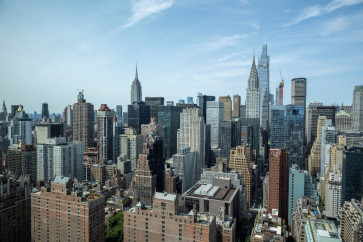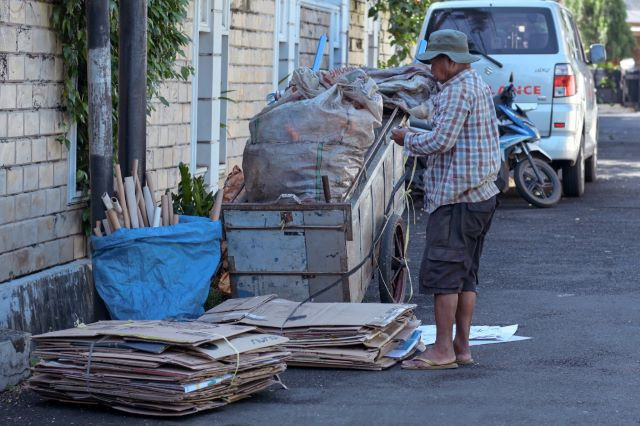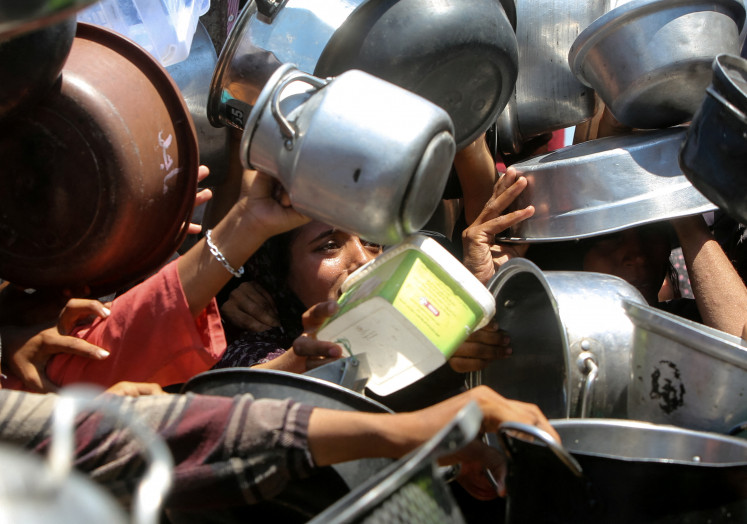Popular Reads
Top Results
Can't find what you're looking for?
View all search resultsPopular Reads
Top Results
Can't find what you're looking for?
View all search resultsEditorial: Great flood is coming
The recent flooding in Pondok Labu, South Jakarta, that forced more than 1,000 residents to flee from their homes should serve as a serious warning for city dwellers that more serious flooding is imminent as the rainy season has not reached its peak as yet
Change text size
Gift Premium Articles
to Anyone
T
he recent flooding in Pondok Labu, South Jakarta, that forced more than 1,000 residents to flee from their homes should serve as a serious warning for city dwellers that more serious flooding is imminent as the rainy season has not reached its peak as yet.
The Meteorology, Climatology and Geophysics Agency (BMKG) has estimated that rainfall will peak in January and February — two critical months when great floods hit the capital in 1996, 2002 and 2007.
Furthermore, the US National Oceanic and Atmospheric Administration (NOAA) forecast that Indonesia would experience 70 percent more rain than normal this season due to the climate phenomenon known as La Niña, which is associated with cooler-than-normal temperatures in the equatorial Pacific Ocean.
Therefore, there is no reason for both the city administration and the residents not to get ready for a possible great flood next year.
The fact that Pondok Labu was the first area badly affected by flooding this year was a shocking reality and deserves the city administration’s serious attention because the area was previously safe from such flooding.
The local residents blame the shooting-range project of the Navy’s Marine corps that, they say, narrowed the Krukut River nearby.
We appreciate the response from the marines, who immediately dismantled the project, although it denied that the project was responsible for the flooding.
The city administration needs to investigate the Pondok Labu case, not focus on who should be blamed, but rather find the best solution.
The Pondok Labu flood should also be a lesson for the city authorities not to always blame nature for flooding, and hide behind the excuse that 40 percent of Jakarta is below sea level.
It may be true that flooding is inevitable in northern parts of the city, unless the city immediately materializes its plan to construct a great sea wall around North Jakarta’s coastline. But, there are many other things to do to ease flooding in other parts of the city.
As admitted by Governor Fauzi Bowo, flood mitigation projects have not been able to save Jakartans from flooding this year because there are still unfinished projects, particularly the dredging of many main rivers. Therefore, people, particularly those who live near rivers, are still at high risk of being affected by flooding.
While we hope that the city administration will go ahead with its flood mitigation project so as to ensure smooth flow of rain water through the existing drainage system into the rivers, which is key to efforts to ease inundation of the roads and residential areas, preparatory measures for the evacuation of flood victims should also be prioritized.
All in all, Jakartans need to prepare themselves for the worst — as seen in 2007, when flood water inundated about 70 percent of the city, killed at least 57 people and forced more than 450,000 residents to evacuate. We hope that it won’t happen, but we must be prepared if it does.










